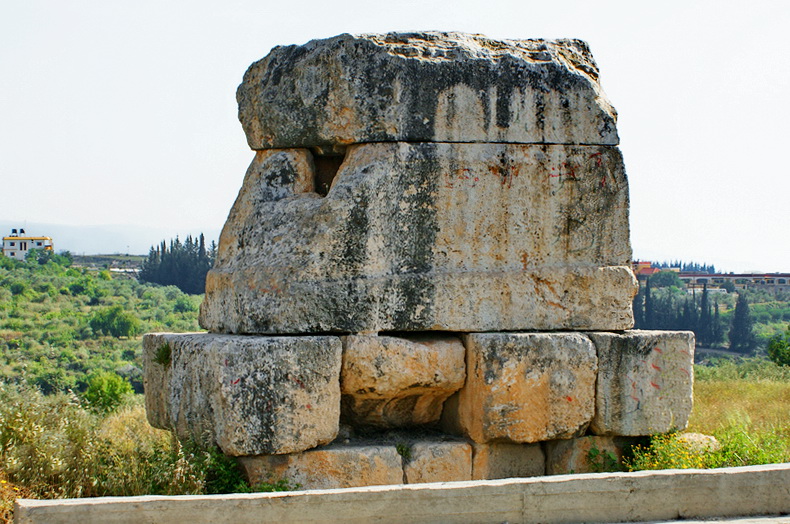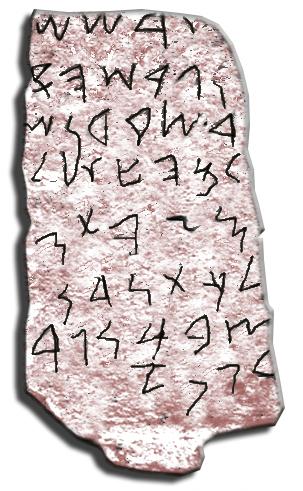|
Abibaal
Abibaal ( phn, 𐤀𐤁𐤉𐤁𐤏𐤋, ʾabībaʿl, ''"My father is Baal"'') was a king of Tyre in the 10th century BC, father of the famous Hiram I. The only information known about him is derived from two passages in Josephus's ''Against Apion'', i.117 and i.118. All that is said in these passages is that he preceded his son Hiram on the throne of Tyre. Neither his length of reign nor his immediate predecessors are known. The dating of Abibaal is therefore dependent on the dates assigned to his son, and here it is only the date of Abibaal's death that can be determined, based on the information preserved in Josephus regarding the length of time between the founding of Carthage (or from Dido's flight from Tyre) until the first year of Hiram. See the Hiram I article for details on the determination of this date. See also *Hiram I *Pygmalion Pygmalion or Pigmalion may refer to: Mythology * Pygmalion (mythology), a sculptor who fell in love with his statue Stage * ''Pigmalion'' ... [...More Info...] [...Related Items...] OR: [Wikipedia] [Google] [Baidu] |
Hiram I
Hiram I ( Phoenician: 𐤇𐤓𐤌 ''Ḥirōm'' "my brother is exalted"; Hebrew: ''Ḥīrām'', Modern Arabic: حيرام, also called ''Hirom'' or ''Huram'') was the Phoenician king of Tyre according to the Hebrew Bible. His regnal years have been calculated by some as 980 to 947 BC, in succession to his father, Abibaal. Hiram was succeeded as king of Tyre by his son Baal-Eser I. Hiram is also mentioned in the writings of Menander of Ephesus (early 2nd century BC), as preserved in Josephus's ''Against Apion'', which adds to the biblical account. According to Josephus, Hiram lived for 53 years and reigned 34. Reign During Hiram's reign, Tyre grew from a satellite of Sidon into the most important of Phoenician cities, and the holder of a large trading empire. He suppressed the rebellion of the first Tyrean colony at Utica, near the later site of Carthage (''Against Apion'' i:18). The Hebrew Bible says that he allied himself with David, king of the United Kingdom of Israel and ... [...More Info...] [...Related Items...] OR: [Wikipedia] [Google] [Baidu] |
King Of Tyre
The King of Tyre was the ruler of Tyre, the ancient Phoenician city in what is now Lebanon. The traditional list of 12 kings, with reigns dated to 990–785 BC, is derived from the lost history of Menander of Ephesus as quoted by Josephus in ''Against Apion'' I. 116–127. Josephus asserts that Menander had drawn his list from the chronicles of Tyre itself. Menander-Josephus also contains a list of 9 kings and judges, with reigns dated to 591–532 BC in Against Apion I. 154–160. Ancient Tyrian rulers based on Hellenic mythology Late Bronze Age rulers Kings of the Sidonians (with Tyre as capital), 990–785 BC The dates for the reconstruction of Menander's Tyrian king list from Abibaal through Pygmalion are established in three places by three independent sources: a Biblical synchronism (Hiram's assistance to Solomon in building the Temple, from 967 BC onwards), an Assyrian record (tribute of Baal-Eser II/Balazeros II to Shalmaneser III in 841 BC), and a Roman historian ( ... [...More Info...] [...Related Items...] OR: [Wikipedia] [Google] [Baidu] |
Kings Of Tyre
The King of Tyre was the ruler of Tyre, the ancient Phoenician city in what is now Lebanon. The traditional list of 12 kings, with reigns dated to 990–785 BC, is derived from the lost history of Menander of Ephesus as quoted by Josephus in ''Against Apion'' I. 116–127. Josephus asserts that Menander had drawn his list from the chronicles of Tyre itself. Menander-Josephus also contains a list of 9 kings and judges, with reigns dated to 591–532 BC in Against Apion I. 154–160. Ancient Tyrian rulers based on Hellenic mythology Late Bronze Age rulers Kings of the Sidonians (with Tyre as capital), 990–785 BC The dates for the reconstruction of Menander's Tyrian king list from Abibaal through Pygmalion are established in three places by three independent sources: a Biblical synchronism (Hiram's assistance to Solomon in building the Temple, from 967 BC onwards), an Assyrian record (tribute of Baal-Eser II/Balazeros II to Shalmaneser III in 841 BC), and a Roman historian ( ... [...More Info...] [...Related Items...] OR: [Wikipedia] [Google] [Baidu] |
Baal
Baal (), or Baal,; phn, , baʿl; hbo, , baʿal, ). ( ''baʿal'') was a title and honorific meaning "owner", "lord" in the Northwest Semitic languages spoken in the Levant during Ancient Near East, antiquity. From its use among people, it came to be applied to gods. Scholars previously associated the theonym with solar god, solar cults and with a variety of unrelated patron deity, patron deities but inscriptions have shown that the name Ba'al was particularly associated with the storm god, storm and fertility god Hadad and his local manifestations. The Hebrew Bible includes use of the term in reference to various Levantine mythology, Levantine deities, often with application towards Hadad, who was decried as a false god. That use was taken over into Christianity and Islam, sometimes under the form Beelzebub in demonology. Etymology The spelling of the English term "Baal" derives from the Koine Greek, Greek ''Báal'' ( which appears in the New Testament and Septuagint, and f ... [...More Info...] [...Related Items...] OR: [Wikipedia] [Google] [Baidu] |
Josephus
Flavius Josephus (; grc-gre, Ἰώσηπος, ; 37 – 100) was a first-century Romano-Jewish historian and military leader, best known for ''The Jewish War'', who was born in Jerusalem—then part of Roman Judea—to a father of priestly descent and a mother who claimed royal ancestry. He initially fought against the Romans during the First Jewish–Roman War as head of Jewish forces in Galilee, until surrendering in 67 AD to Roman forces led by Vespasian after the six-week siege of Yodfat. Josephus claimed the Jewish Messianic prophecies that initiated the First Jewish–Roman War made reference to Vespasian becoming Emperor of Rome. In response, Vespasian decided to keep Josephus as a slave and presumably interpreter. After Vespasian became Emperor in 69 AD, he granted Josephus his freedom, at which time Josephus assumed the emperor's family name of Flavius.Simon Claude Mimouni, ''Le Judaïsme ancien du VIe siècle avant notre ère au IIIe siècle de notre ère : Des ... [...More Info...] [...Related Items...] OR: [Wikipedia] [Google] [Baidu] |
Against Apion
''Against Apion'' ( el, Φλαΐου Ἰωσήπου περὶ ἀρχαιότητος Ἰουδαίων λόγος α and ; Latin ''Contra Apionem'' or ''In Apionem'') is a polemical work written by Flavius Josephus as a defense of Judaism as a classical religion and philosophy against criticism by Apion, stressing its antiquity against what he perceived as more recent traditions of the Greeks. One of his main sources was Menander of Ephesus. ''Against Apion'' cites Josephus' earlier work Antiquities of the Jews, so can be dated after C.E. 94. It was possibly written in the early second century. Text ''Against Apion'' 1:8 also defines which books Josephus viewed as being in the Jewish Scriptures: In the second book, Josephus defends the historicity of the Jewish Bible against accusations made by Apion (who Josephus states is not Greek), arguing that Apion in fact rehashes material of Manetho's, though there was apparently some confusion between Manetho's references to the Hyk ... [...More Info...] [...Related Items...] OR: [Wikipedia] [Google] [Baidu] |
Pygmalion Of Tyre
Pygmalion (Ancient Greek: ; Latin: ), was king of Tyre from 831 to 785 BCE and a son of King Mattan I (840–832 BCE). During Pygmalion's reign, Tyre seems to have shifted the heart of its trading empire from the Middle East to the Mediterranean, as can be judged from the building of new colonies including Kition on Cyprus, Sardinia (see Nora Stone discussion below), and, according to tradition, Carthage. For the story surrounding the founding of Carthage, see Dido. Name The Latin spelling represents the Greek . The Greek form of the name has been identified as representing the Phoenician ''Pumayyaton'' (or ). This name is recorded epigraphically, as , , a theophoric name interpreted as meaning "Pummay has given". This historical ''Pumayyaton'' however, was a Cypriot "king of Kition, Idalion and Tamassos", not of Tyre, and lived several centuries after Pygmalion of Tyre's supposed lifetime. The Nora Stone, discovered in 1773, has also been read as containing the nam ... [...More Info...] [...Related Items...] OR: [Wikipedia] [Google] [Baidu] |
10th-century BC Rulers
1 (one, unit, unity) is a number representing a single or the only entity. 1 is also a numerical digit and represents a single unit of counting or measurement. For example, a line segment of ''unit length'' is a line segment of length 1. In conventions of sign where zero is considered neither positive nor negative, 1 is the first and smallest positive integer. It is also sometimes considered the first of the infinite sequence of natural numbers, followed by 2, although by other definitions 1 is the second natural number, following 0. The fundamental mathematical property of 1 is to be a multiplicative identity, meaning that any number multiplied by 1 equals the same number. Most if not all properties of 1 can be deduced from this. In advanced mathematics, a multiplicative identity is often denoted 1, even if it is not a number. 1 is by convention not considered a prime number; this was not universally accepted until the mid-20th century. Additionally, 1 is the ... [...More Info...] [...Related Items...] OR: [Wikipedia] [Google] [Baidu] |
Year Of Birth Unknown
A year or annus is the orbital period of a planetary body, for example, the Earth, moving in its orbit around the Sun. Due to the Earth's axial tilt, the course of a year sees the passing of the seasons, marked by change in weather, the hours of daylight, and, consequently, vegetation and soil fertility. In temperate and subpolar regions around the planet, four seasons are generally recognized: spring, summer, autumn and winter. In tropical and subtropical regions, several geographical sectors do not present defined seasons; but in the seasonal tropics, the annual wet and dry seasons are recognized and tracked. A calendar year is an approximation of the number of days of the Earth's orbital period, as counted in a given calendar. The Gregorian calendar, or modern calendar, presents its calendar year to be either a common year of 365 days or a leap year of 366 days, as do the Julian calendars. For the Gregorian calendar, the average length of the calendar year ( ... [...More Info...] [...Related Items...] OR: [Wikipedia] [Google] [Baidu] |
980s BC Deaths '', a video game
{{numberdis ...
98 may refer to: * 98 (number) * Windows 98, a Microsoft operating system Years * 98 BC * AD 98 * 1798 * 1898 * 1998 * 2098 See also * Californium (atomic number), a chemical element * 98 Degrees (98°), a band * ''Madden NFL 98 ''Madden NFL 98'' is a 1997 football video game. It features John Madden on the cover. It was the last version of the ''Madden'' series to be released for the Super NES, Genesis and Sega Saturn platforms, as well as the last Madden game to uti ... [...More Info...] [...Related Items...] OR: [Wikipedia] [Google] [Baidu] |





